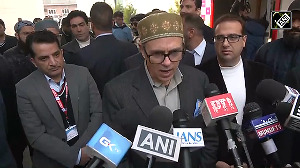Challenger series - the complete coverage
Cricket, it is often said, is a religion is India. But one look at the empty stands in the Chinnaswamy stadium and you will be falsely convinced that the sport has no takers.
India's premier domestic tournament, the Challenger Series, is taking place in Bangalore and you would be hard pressed to find even one hoarding in the city advertising the players or the tourney itself.
What domestic cricket needs is a coterie of players who fans can relate to. Not just Sachin Tendulkar the player, but Sachin Tendulkar the person; not just young stars like Ambati Rayudu, but the established ones who are trying to stage a comeback. Television and an event like the Challenger combine to give the public a chance to interact with the players and judge their worth even before they make it big.
The top 33 players in India, including the entire India Senior squad, are competing for a chance to represent the country. There is no prize-money for the event but that does not change anything for the players; they still compete as hard as ever. The stars are all there, the quality of cricket played is high; four matches played under lights but the magical aura that a packed crowd can give to a match is sadly missing. As soon as you walk inside the stadium, silence envelops you.
The Board of Control for Cricket in India has long been talking about popularising domestic cricket and now, when they have the opportunity, they are doing nothing. Doordarshan's coverage of the event remains as bad as ever and for those who have had a healthy diet of ESPN/Star Sports, it is downright pathetic.
Even the Bangladesh versus Pakistan series would have got more eyeballs than the Challenger Series, and that is a telling fact.
Soccer is not a popular sport in the United States but the success of the 1994 World Cup held there was achieved by clever marketing and advertising. The commodification of sporting events, and the development of a global mass consumption culture allowed companies to advertise their products all over the world while the American organizers kept all the profits and revenue from selling of sponsorship and television rights.
The bottom line is simple: the BCCI has to not only talk the talk but also learn how to walk the walk. In fact, it has a ready market as no cricket has been played for five months and the players are raring to go after some good rest. So why is it not going all out to create greater awareness for domestic cricket?
Clearly, the BCCI can use television as a seductive advance scout for the domestic league by selling programming that makes people aware of what the Ranji Trophy, the Duleep Trophy, the Irani Trophy and the Challenger Series are. People aren't going to watch a Mumbai versus Delhi match unless they know the composition of the teams. The need to identify with the players is paramount and the BCCI needs to realise this.
In 2001, the Challenger Trophy played to a decent crowd in Bangalore; so what has changed in between then and now? The big stars are playing but the promised buzz is still missing.






